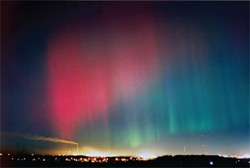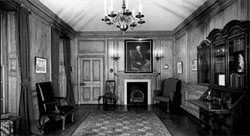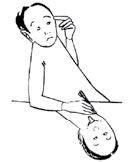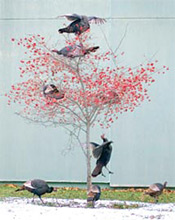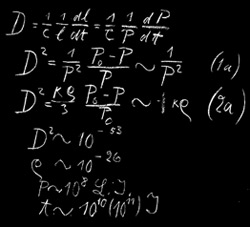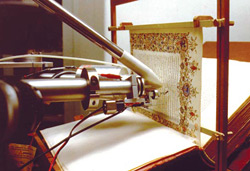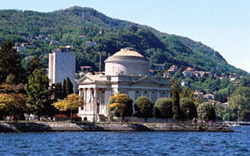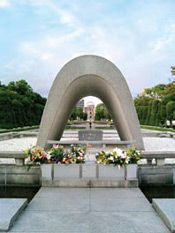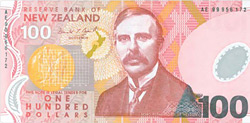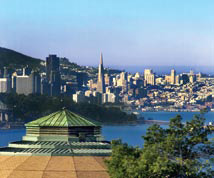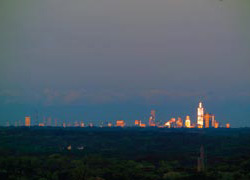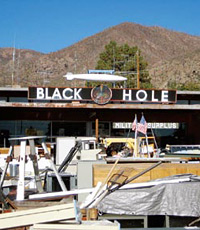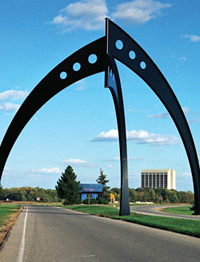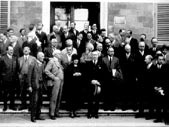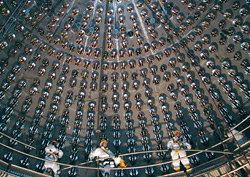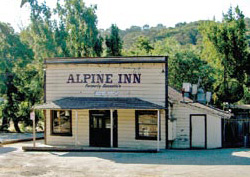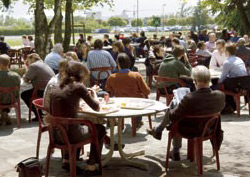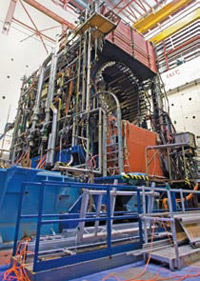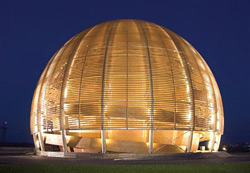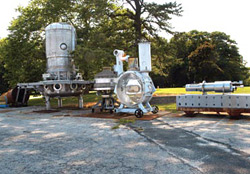The particle physics Life List
By Glennda Chui
|
Bird watchers have "life lists" of species they hope to see in their lifetimes. Why shouldnt particle physics fans do the same? With that in mind, in our April issue we asked readers to help us put together the first particle physics life list. Here it is, in no particular order, with items ranging from the silly to the sublime. This is not meant to be a comprehensive account of great figures or historical moments; rather, its a checklist of things you can see or do today, some as common as crows and others as hard to spot as the ivory-billed woodpecker. Some require special access, and rules for visitors vary and may change; so before you go out of your way to bag one of these items, call ahead. On the other hand, many physics labs offer tours and are more accessible than you think! Our thanks go to all the readers who sent suggestions and to the many patient people whose brains we picked along the way. Please send feedback and ideas for additional life list items to letters@symmetrymagazine.org |
| Glenn Seaborg's cigar box Lawrence Berkeley National Laboratory, Berkeley, California The speck of plutonium he carried in the box is still there. Nearby, his lab book records the discovery of plutonium-239. |
|
Watch the northern or southern lights Created by high-energy particles slamming into gas in the upper atmosphere, the aurorae are particle physics on a glorious scale.
Taughannock Falls Waterfall near Cornell University where Hans Bethe, Richard Feynman, and many others went for inspiration. Listen to Einstein, Kelvin, and Rutherford Historic recordings available from the British Library at http://tinyurl.com/2xm4xa Cathode ray tube used by J.J. Thomson Used to discover the electron in 1897. James Clerk Maxwell's house Houses a small museum devoted to the discoverer of electromagnetism, who is considered the father of modern physics. Marie Curie's office and personal laboratory Includes 1902 lab notes on the atomic mass of radium, which are still radioactive, and Tho-Radia face cream, marketed during the "radium craze" of the 1920s. Attend a CERN Council meeting See how major decisions in European particle physics are made. The council meets twice a year. Explore the wreckage of a cargo plane Tunnels lead to the 1970s wreck, buried under 20 meters of snow; a favorite of physicists on the IceCube experiment taking a work break. Sir Isaac Newton's birthplace, Woolsthorpe Manor Apples falling in the manor's orchard set him thinking about gravity. Dozens of places claim to have descendents of the apple tree. Cockcroft-Walton pre-accelerator Named after two Nobel laureates, this science-fiction-looking machine provides 750,000 volts for the initial acceleration of particles. (See photo) |
Sir Isaac Newton's living room Dismantled and moved here in the 1930s, joining a large collection of Newtonia.
Bruno Touschek's drawings The physicist who began research into matter-antimatter collisions was also known for his deft, funny caricatures and sketches, which decorate a physics department meeting room.
Theory fish tank No fish here; just a glassfronted room lined with chalkboards where theorists hold discussions. Richard Feynman's lecture hall The hall, #201 in the East Bridge physics building, was the scene of the freshman/ sophomore lectures collected in Feynman Lectures on Physics, also known as "The Red Book." Log on to The Particle Adventure An award-winning interactive tour of the particle physics world. Read Russian physics news Pick up the latest edition of the official lab newspaper, Dubna. Science. Cooperation. Progress, which recently celebrated its 50th year. Online at http://www.jinr.ru/news.htm Watch particle events live on the Web See raw events coming straight from particle physics detectors around the world. Fermilab: http://www.fnal.gov/pub/ evdisp/ |
| wildlife | |
|
Gobblers In addition to the deer, geese, groundhogs, and other wildlife, these slightly prehistoric-looking wild turkeys reign over the lab's roads, sidewalks, and even its trees.
Wild turkeys and worker goats The goats work summers, chomping weeds; the turkeys are year-round residents. White deer Native to Europe, North Africa, and parts of Asia, about 40 of them freely roam the site. Not to be confused with local whitetailed deer that live there, too. |
Help harvest seeds in a restored prairie Seeds gathered each fall in the lab's 1100 acres of tallgrass prairie are used to revive native grasslands. Frolicking baby bison Born to the lab's resident herd each spring, they are possibly the cutest sights in particle physics. Paleoparadoxia The fossil skeleton of an ancient hippo-like creature was unearthed during construction in 1964; some joke that it was SLAC's first discovery. 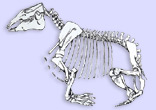 Paleoparadoxia |
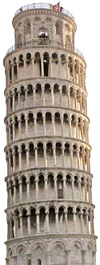 Leaning Tower of Pisa The first matter-antimatter collisions A diminutive prototype called AdA demonstrated the working principle that spawned the world's most powerful particle colliders. Leaning Tower of Pisa Scene of a famous experiment that may never have happened: An early biographer said Galileo dropped two objects from the top to see if the heavier one fell faster. But Galileo himself never described such an experiment.  Homestake Mine Homestake Mine The deepest mine in the US, it was the setting for a solar neutrino experiment that won Brookhaven nuclear physicist Raymond Davis, Jr. a share of a Nobel Prize. Recently chosen by the National Science Foundation as the site of a major multipurpose underground lab. Cosmic ray shed Used for the first determination of the mass and decay time of the muon in 1937 and the discovery of nuclear magnetic resonance, or NMR, in 1945. Center for History of Physics Archives, oral histories, online exhibits, and other resources for scholars, teachers and physics buffs. http://www.aip.org/history/ Pierre Auger Observatory Surface detectors and telescopes spread across more than 3000 square kilometers of the desolate Pampa Amarilla, awaiting rare, high-energy cosmic rays. Einstein's blackboard Notes from a lecture he gave in the 1930s that were never erased.
Einstein's pipe On display at the National Air & Space Museum in Washington, DC, until July 2008 while its home institution is remodeled. Einstein's apartment Restored and open to the public. He lived there from 190305. The Royal Institution of Great Britain Papers and original apparatus from Michael Faraday and James Dewar, as well as William Henry Bragg and William Lawrence Braggfather-and-son winners of the 1915 Nobel Prize in Physics. Closed since 2006 for major renovation. LABEC Laboratory This national lab specializes in using a particle beam to analyze cultural heritage items, from Galileo manuscripts to ceramics and paintings.
E.O. Lawrence's desk and glasses Also on view: correspondence congratulating him on the first successful acceleration of protons, for which he won the Nobel Prize. Trinity test site Site of the first atomic bomb explosion, July 16, 1945; open to the public on the first Saturdays in April and October. Bonus point: See a piece of "trinitite," glass made of bomb-fused sand. Take in a performance in Ramsey Auditorium Performers have included Suzanne Vega, Arlo Guthrie, George Winston, and Pilobolus. Galileo's lens In 1610, he used it to discover the moons of Jupiter. Tempio Voltiano Instruments and memorabilia of Alessandro Volta, the Italian physicist who invented the electric battery and lent his name to the volt.
|
Stand in the LHC ring with one foot in France, the other in Switzerland There are six places in the LHC collider tunnel where you can do this. Alternating Gradient Synchrotron Particle accelerator where strong focusing was invented and put into practice. Research here led to three Nobel prizes. The Christmas pantomime A review of worldwide particle physics in music and song, presented by the CERN Theory Division. Scurrilous, amusing, not to be missed. Peace Memorial Park A museum and dozens of monuments commemorate the world's first atomic bombing, August 6, 1945.
The first cloud chamber charged-particle detector C.T.R. Wilson won a Nobel Prize for inventing it. Suit up and enter a clean room At physics labs across the world, here's where high-tech particle detectors and accelerator components are put together. View photos by Yuri Tumanov Photos taken during his 40 years at the lab are known throughout the physics world. Spend a Rutherford, Bohr, Birkeland, or Tesla All four physicists are featured on currency: Ernest Rutherford on New Zealand's $100 bill, Niels Bohr on the Danish 500 kroner note, Kristian Birkeland on the Norwegian 200 kroner, and Nikola Tesla on the Serbian 100 dinar.
Ernest Rutherford's birthplace Display panels and a small garden alongside a state highway. SNOLab Journey into a working mine, then shower and change into clean-room garb to see some of the most advanced astroparticle physics experiments in the world. Sciences-ACO museum See ACO, an accelerator that made important contributions to both particle physics and synchrotron radiation research. Main cyclotron accelerator tank, TRIUMF Accessible during maintenance. State-of-the-art control room The control room of the Continuous Electron Beam Accelerator Facility (CEBAF) was redone in 2004 and outfitted with a huge videoscreen to monitor operations. SLAC research yard Gaze down from an overlook at the area at the end of the two-mile linear accelerator where research led to four Nobel Prizes. Kamioka Underground Observatory Drive up the mountains to what was the largest zinc mine in East Asia and visit the Kamioka mine, 1 km below the surface. It now houses a mix of cutting-edge experiments, from the Super-Kamiokande neutrino experiment to dark-matter and gravitational-wave detectors. IceCube Neutrino Observatory Thousands of optical sensors are being installed to record particles penetrating 1450 to 2450 meters of Antarctic ice. |
| greatviews | |
|
Lawrence Berkeley National Laboratory The lab has a sweeping vista across San Francisco Bay; watch the sun set behind the Golden Gate Bridge.
CERN water tower 360-degree view of CERN, Geneva, the Alps, and the Jura Mountains. |
The second-longest building in the world At 3073 meters long, it's second only to the Terminal 3 building at Beijing Capital International Airportso long you can't see one end from the other. The SLAC building houses a string of klystrons, which power the linear accelerator below; check them out from the visitors' gallery. Top of Wilson Hall View the outline of the four-mile Tevatron accelerator and, on a clear day, the Chicago skyline.
|
|
The roving Gammasphere The world's most sensitive gamma ray detectorit's in the book Guinness World Records. It has been refitted so it can travel across the floor to line up with experiments. A model of it also had a cameo in the 2003 movie The Hulk. The Black Hole This junkyard, run by former Los Alamos machinist Ed Grothus, sells surplus from the Los Alamos lab.
The DELPHI detector Guided tour of a retired detector in a working accelerator tunnel. Leave your watch on the bus, as it could be stopped by stray magnetic fields. Pauli room Contains library, artifacts, and death mask of Nobel laureate Wolfgang Pauli, who thought up the neutrino. Wilson Hall atrium Sixteen stories tall, with an indoor garden and cafeteria. Trees in blankets Pine trees are wrapped in straw blankets, called Komomaki, which attract moth larvae that otherwise would infest the tree. The infested blankets are burned in the spring. The Manhattan Project Visit the Bradbury Science Museum to learn about the top-secret wartime quest to develop the atom bomb. Get face to face with some of the world's largest particle-collider detectors:
|
Robert Wilson's sculptures Four giant sculptures designed by the lab's founding director include a Möbius strip and a three-span arch called "Broken Symmetry." Bonus point: Spot the row of power poles shaped like the Greek letter pi.
First self-sustained nuclear chain reaction A sculpture by Henry Moore marks the spot in a former squash court where, in 1942, Enrico Fermi and colleagues set off the first controlled, self-sustaining nuclear chain reaction. Mingle with physicists at Wine & Cheese Traditional end-of-week wind-down before the weekly seminar on particle physics results. Pioneer cemetery Lab founding director Robert Wilson is buried here, along with an American general and 18 early settlers. Museo Storico della Fisica "Enrico Fermi" Museum on Fermi's life and research is scheduled to open at the end of 2007 in the via Panisperna building.
See experiments in Gran Sasso National Laboratory The largest underground lab in the world dedicated to astroparticle physics; enter via a highway tunnel that cuts through a mountain.
|
| eats&drinks | |
|
Lunch or a beer at the Alpine Inn An atmospheric dive, known to old-timers as Zotts, featuring a packed-dirt yard, pine trees and screeching Stellers jays.
Breakfast or lunch on the SLAC patio Look out past Stanfords Hoover Tower to San Francisco Bay as acorn woodpeckers frolic in the oak trees. Dine with a Nobel Prize winner Join a true physics expert for food and small talk. Hoist a drink at Charlys Pub A favorite gathering place for physicists. Lunch at the IHEP cafeteria Master chop sticks while talking about the latest results produced by the Beijing Electron Positron Collider. |
Dine at Chez Leon Serving lunch on Wednesday and dinner on Thursday, Chef Tita has run this on-site restaurant for more than 28 years. DESY canteen Try the canteen's signature dish, Currywurst-Pommes Meet colleagues after work at the Users' Center A funky bar featuring ping pong, pool, and popcorn. CERN cafeteria Three hot food lines, an unbelievable salad bar (with ingredients that are sometimes hard to identify, but tasty just the same); fancy pastry, wine, champagne, and coffee brewed fresh by the cup. Dine outside on a tree-shaded terrace.
|
|
Alternating Gradient Synchrotron Particle accelerator where strong focusing was invented and put into practice. Research here led to three Nobel prizes. Stroll like Einstein Although the institute's buildings are off-limits to the public, the woodsy 500-acre nature reserve where Einstein once strolled is open year-round. Galileo's middle finger Cut off 100 years after his death and preserved as a relic. Control console of the Harvard Cyclotron Lab Preserved just as it was on the day it was decommissioned in 2002, the control console is a mixture of 1947 vacuum-tube era switches, mid-century meters, and later computer components. The technicians' personal touches little jokes, take-out menus, call listsare still there. |
The computer Tim Berners-Lee used to invent the World Wide Web Berners-Lee and colleagues created Hypertext Transfer Protocol, or HTTP, the dominant way of providing information over the Internet. Collider Experimental Hall This pit at the east end of the Stanford Linear Collider houses the dusty remnants of the MARK II and SLD detectors.
|
| locomotion | |
|
Ride the elevator down into the Soudan Underground Laboratory Half a mile down into the pitch black, with bats. Once there, check out the mural in the MINOS cavern. Drive a golf cart through the Tevatron tunnel Walk beneath Hamburg The HERA collider extends under the city. Ride in the PETRA Tunnel Take a ride on a Dwarslöper, a transport wagon specially developed to transport magnets into HERA injection tunnels. |
Bike a section of the Large Hadron Collider ring Walk or run along the SLAC linear accelerator Site of the annual SLAC run Walk or run the four-mile Tevatron ring road |
|
Apparatus used to prove that parity is not conserved A team lead by Madame Chien-Shiung Wu showed our world is slightly different than its mirror image, confirming a prediction for which T.D. Lee and C.N. Yang won a Nobel Prize. See the CERN Globe lit up at night Formally called The Globe of Science and Innovation, the 40-meter-diameter sphere is built of wood from Swiss forests. The Globe is a gift from the Swiss government for the lab's 50th anniversary.
|
Bubble Chamber Cemetery Reminders of the evolution of detector technology.
The first cyclotron The first cyclotron, a device to accelerate charged particles such as electrons to higher energies, was built under the direction of its inventor, Ernest O. Lawrence, at the University of California, Berkeley, in 1930. Charged particles injected near the center move in semicircles; as the particle's energy increases, its semi-circles grow larger. Cyclotrons were the best source of high-energy particles for many decades. |
|
Credits Readers Jodi Cooley-Sekula, Philip Downey, Lara Gundel, Mike Johnson, Spencer Klein, Andreas Kronfeld, Peter Lucas, David W. Miller, Ina Reichel, Stephen Sekula, Dave Wark, and John Womersley; David Kaiser, Associate Professor, Program in Science, Technology & Society, and Lecturer, Department of Physics, Massachusetts Institute of Technology; Sara Schechner, David P. Wheatland Curator, Collection of Historical Scientific Instruments, Department of the History of Science, Harvard University; Roger Sherman, Associate Curator, Modern Physics Collection, National Museum of American History, Smithsonian Institution; Spencer Weart, Director, Center for History of Physics, American Institute of Physics; and the editorial staff and contributing editors of symmetry, located at particle physics laboratories across the world. Photo Credits |
Click here to download the pdf version of this article.



